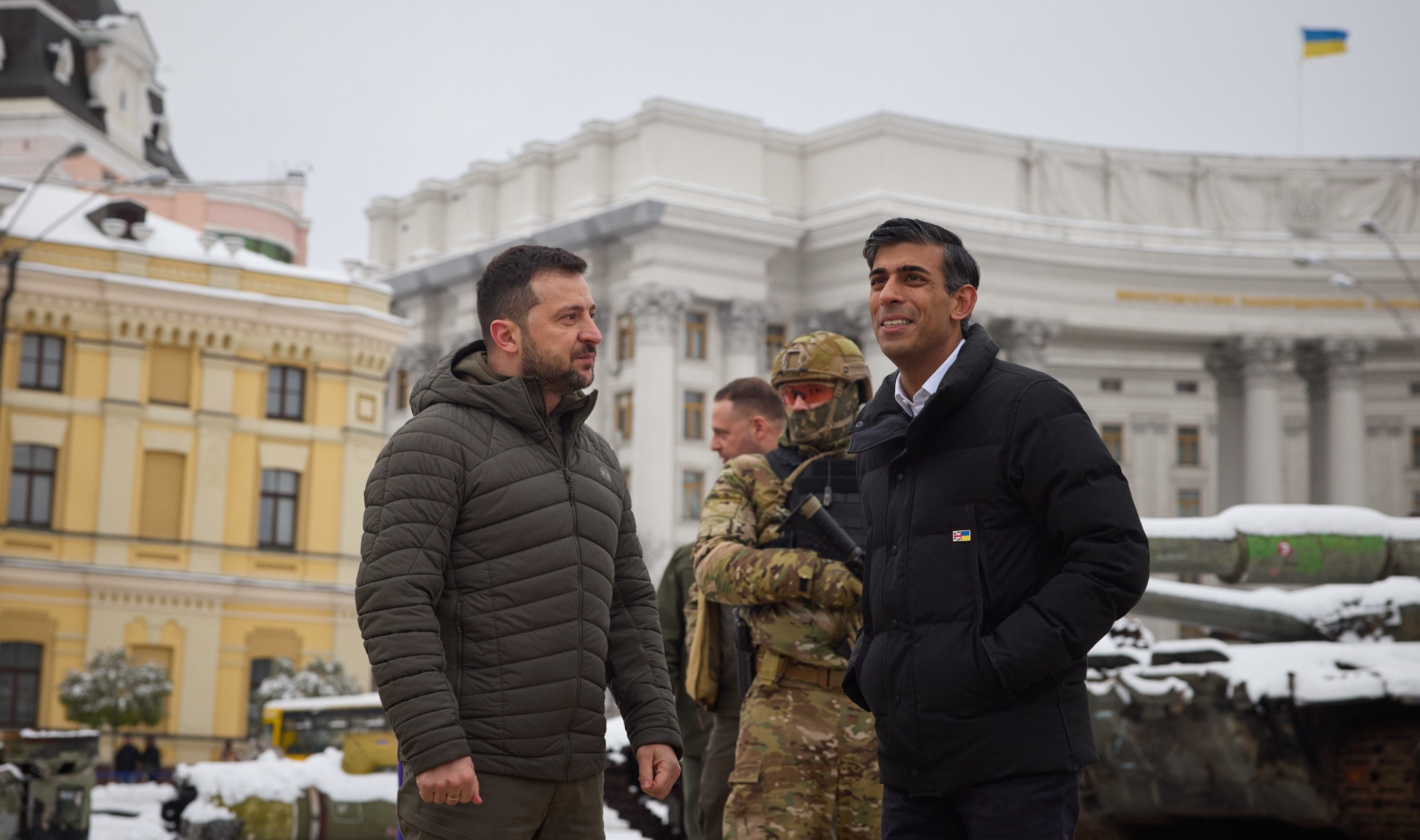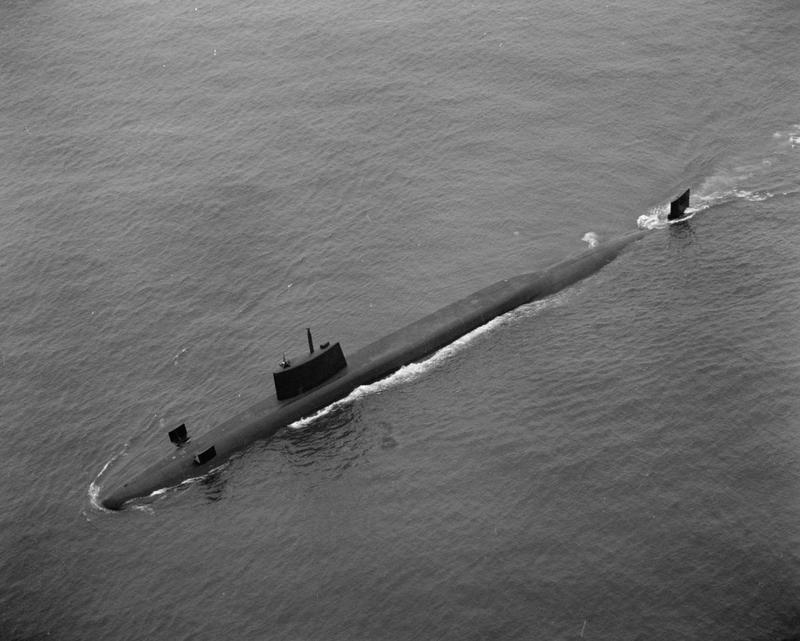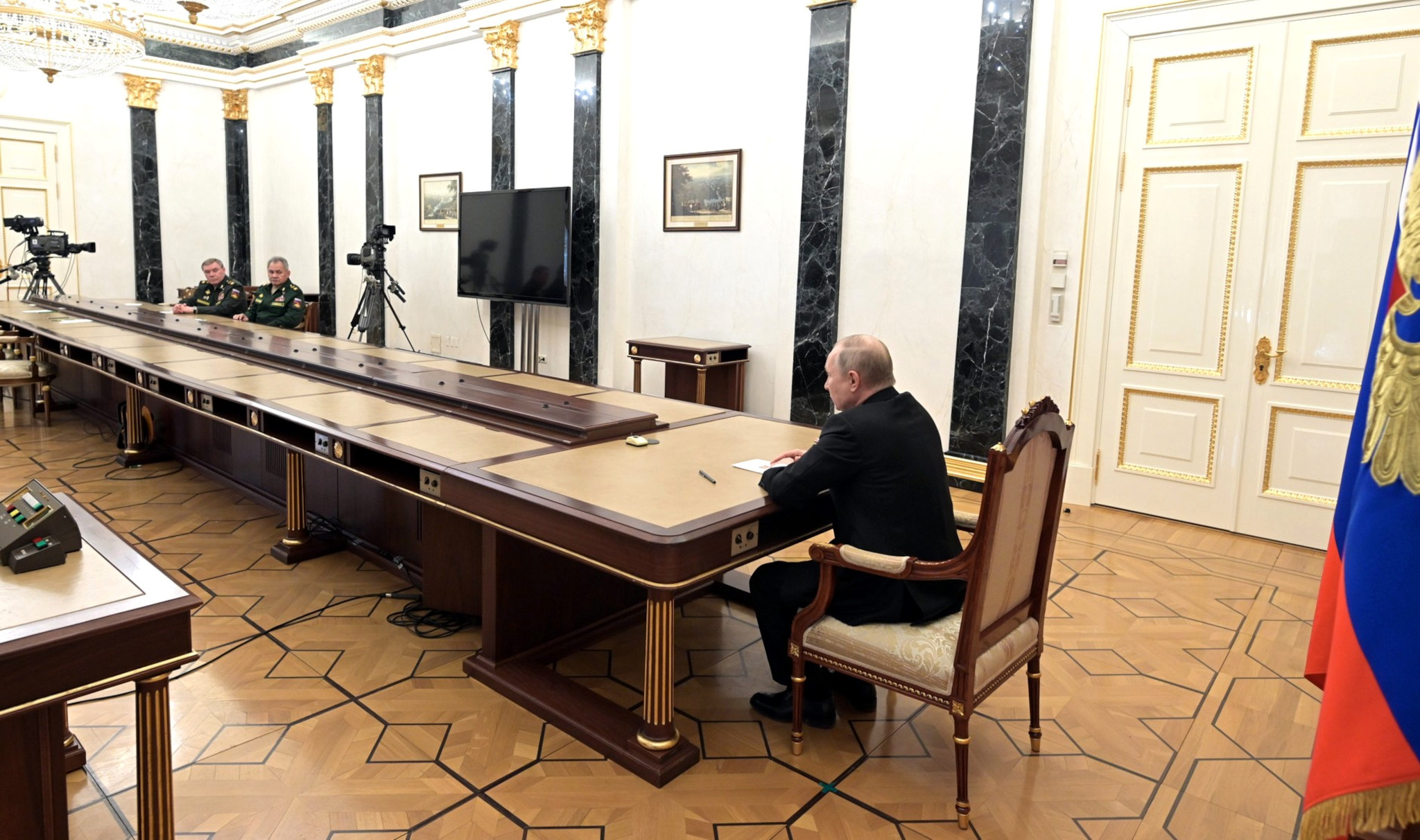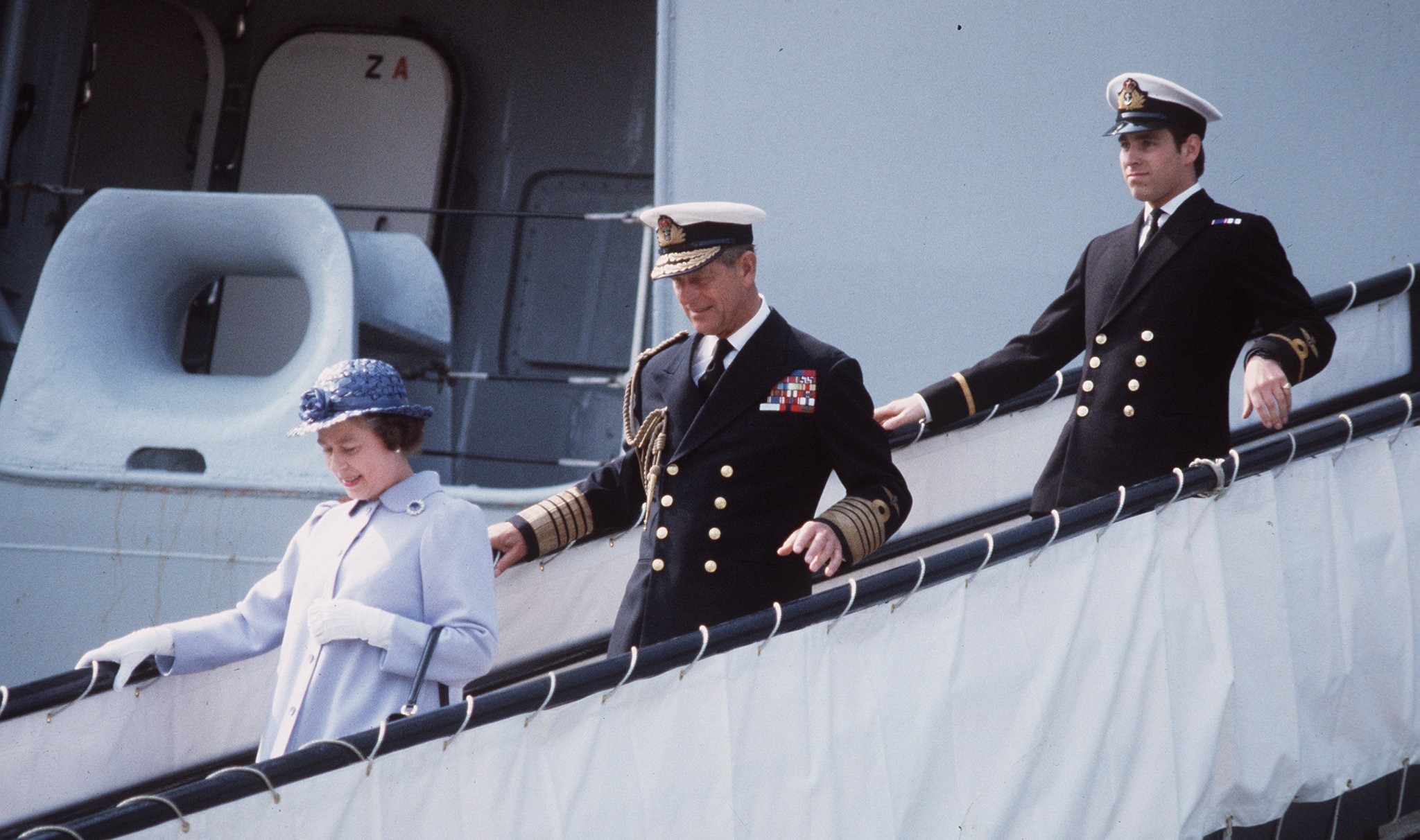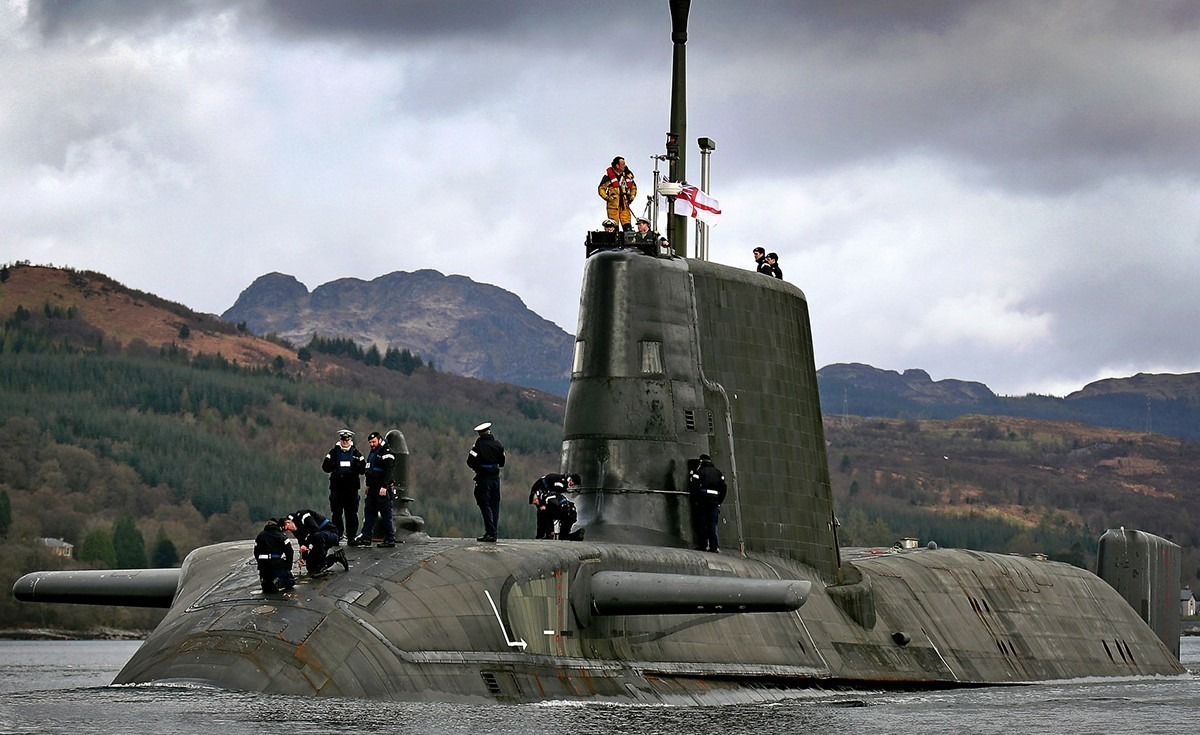Vladimir Putin’s threat to use nuclear weapons if losing the war in Ukraine parallels NATO’s policy of “flexible response” that dates back to 1968, which similarly included a willingness to use nuclear weapons if losing a conventional war.
That policy is not widely understood, yet was and remains a part of US and NATO nuclear strategy, including Britain whether as a NATO member or acting alone. This contrasts with the common view in the public mind that small-scale use of nuclear weapons is not a part of war-planning.
In the context of the conflict in Ukraine, Putin’s threat should not be considered absurd and instead it is a powerful reason for seeking a negotiated settlement to the conflict.
The Ukraine context
Support for nuclear weapons is frequently conditional rather than absolute. Thus, nuclear weapons are horrendously dangerous and we would be better off without them, but in a nuclear-armed world they ensure stability because of the risk of mutually assured destruction. No one will be foolish enough to use them first.
That perspective has been thrown into doubt in the Ukraine War, with President Putin inferring that Russia would be prepared to use nuclear weapons if NATO was to interfere excessively. Is Putin therefore seeing nuclear weapons as useable, with a war-time use that exceeds the risk of escalation to all-out nuclear war?
If “small wars in far-off places” are feasible, then is mutually assured destruction a myth? The evolution of the nuclear age does suggest so, and the war in Ukraine makes it especially important that such issues be debated in public.
This article summarises some of the evidence, with enough available in the public domain to show that the use of nuclear weapons in circumstances that fall well short of a global nuclear conflict, has been a part of strategy since nuclear weapons were first deployed in substantial numbers.
The issue of proof
In analysing nuclear postures, it is not easy to show beyond all doubt that the use of nuclear weapons short of a central nuclear exchange has been or is seriously considered.
Russian nuclear thinking until very recently has been somewhat opaque on the nuclear use question, but Putin’s June 2020 presentation “On Basic Principles of State Policy of the Russian Federation on Nuclear Deterrence” is helpful in pointing to a potential nuclear response to non-nuclear aggression.
Moreover, his posture has continued to receive relatively generous funding in recent decades, even in preference to conventional spending. Partly because of that, it is in the nuclear arena, if no other, that Russia can still be considered to have superpower status.
The wide range of tactical nuclear weapons within its overall nuclear forces matches those of the United States and its multiple targeting options, many of those falling far short of all-out nuclear war.
Nuclear thinking in the early Cold War years
There is plenty of evidence that ever since Hiroshima and Nagasaki, nuclear weapons have been seen as intrinsically useable, with the idea that they keep the peace being fostered by nuclear powers to satisfy public concerns.
Even by the time that those Japanese cities had been destroyed in 1945 the United States had already set up a production line able to deliver two more atom bombs each month until Japan surrendered. Even after the war had ended the US had already established an assembly line, with six bombs built by the end of 1945 and 50 by 1948.
The view within the military in the late 1940s was that using the atom bomb was just an extension of mass conventional bombing. It may have taken a thousand heavy bombers to destroy Hamburg, Dresden and Tokyo with high explosives and incendiaries, but that could now be done by one bomber and one weapon.
In the public mind, by the early 1950s and with the Soviet Union also a nuclear power, the idea emerged that a balance of terror could at least bring stability, and no one would be the first to attack for fear of destruction.
Ever since Hiroshima and Nagasaki, nuclear weapons have been seen as intrinsically useable
A corollary of this, though, was that if a nuclear-armed state did use nuclear weapons then its opponent would do likewise, ensuring a central nuclear exchange and world-wide devastation. This made it essential for governments to emphasise the stability of mutually assured destruction, and that emphasis had sufficient impact on public opinion in the nuclear-armed states for the belief to be embedded that limited nuclear wars was not on the agenda.
The problem was that this was not a view held in military and security circles and was demonstrated by a famous exchange between Senator Tower and the US Chief of Staff, General Jones, in Senate hearings:
“Tower: General Jones, what is your opinion of the theory of mutual assured destruction?
Jones: I think it is a very dangerous strategy. It is not the strategy we are implementing today within the military but it is a dangerous strategy…
Tower: Your professional military judgement is that it is a dangerous strategy and it is not the one we should follow?
Jones: I do not subscribe to the idea that we ever had it as our basic strategy. I have been involved with strategic forces since the early 1950s. We have always targeted military targets. There has been a lot of discussion…about different strategies. We followed orders, but basically, the strategy stayed the same in the implementation of targeting.
Tower: Unfortunately, I am not sure that your opinion was always shared by your civilian superiors.
Jones: I agree that there have been some, including some in government, who have felt that all we require is a mutual assured destruction capability. I am separating that from our targeting instructions in the field…”
Throughout the 1950s the United States and the Soviet Union expanded their arsenals while developing a wide range of nuclear weapons, many with specific war-fighting purposes.
They included not just massive city-destroying H-bombs but nuclear-tipped torpedoes, surface-to-air missiles, anti-submarine nuclear depth bombs, land mines, short-range battlefield missiles and mortars and even nuclear-capable artillery. War-fighting was embedded in nuclear planning.
Within military circles the extent of planning for limited nuclear use was covered in some open source security journals, the most substantial being the writings of professor Desmond Ball of the Australian National University. According to Ball, by 1982 the United States had a portfolio of 40,000 nuclear targets with multiple levels of operation from limited wars to a full central nuclear exchange.
It was a long way from the public assumption of deterrence through mutually assured destruction and extended to NATO nuclear planning for nuclear war in Europe.
NATO nuclear policy
In relation to Putin and Ukraine, it is NATO’s nuclear posture that is particularly relevant. Developed in the 1960s and little changed since, it is known as “Flexible Response” and originally codified in a document, MC14/3, titled Overall Strategic Concept for the Defence of the NATO Area.
This was agreed in 1968 and held that if NATO was losing a conventional war with the Soviet bloc it would be prepared to use nuclear weapons first to prevent defeat.
The Soviets claimed to have a “no first use” policy but given their huge range of tactical nuclear weaponry no one in NATO took this seriously. Indeed, Putin’s threat of WMD use in Ukraine at the end of February was little more than a restatement of NATO’s first use policy.
By the early 1970s, flexible response was well established under NATO’s Nuclear Operations Plan which embraced two levels of the use of tactical nuclear weapons against Soviet forces, selective options and general response.
Selective options involved a variety of plans, many of them assuming first use of nuclear weapons against Warsaw Pact conventional forces. At the lowest level these could include up to five small air-burst nuclear detonations intended as warning shots to demonstrate NATO’s intent.
At a higher level of use were pre-packaged options, defined in the US Army Field Manual as: “a group of nuclear weapons of specific yields for use in a specific area and within a limited time to support a specific tactical goal… Each package must contain nuclear weapons sufficient to alter the tactical situation decisively and to accomplish the mission.”
What is long forgotten is that military leaders were quite open about the policy.
One of the clearest examples was a statement from the military head of NATO, the US General Bernard Rogers when he said, of the possible battlefield use of nuclear weapons, that his orders would be: “Before you lose the cohesiveness of the alliance – that is, before you are subject to (conventional Soviet military) penetration on a fairly broad scale – you will request, not you may, but you will request the use of nuclear weapons…”
Winning a war
Furthermore, there is evidence that first use was more about an overall concept of winning a war than just compensating for any perceived conventional imbalance.
This was demonstrated in a revealing presentation of NATO nuclear policy by the UK government, cited in a 1988 parliamentary report: “The fundamental objective of maintaining the capability for selective sub-strategic use of theatre weapons is political – to demonstrate in advance that NATO has the capability and will to use nuclear weapons in a deliberate, politically controlled way with the objective of restoring deterrence by inducing the aggressor to make the decision to terminate his aggression and withdraw.”
My own experience of informal discussions on the first use of nuclear weapons by NATO include a briefing for UK academics at NATO HQ in the late 1980s when I was able to discuss this with a senior German civil servant seconded to NATO’s Nuclear Planning Group.
He gave as an example a NATO response to a mass attack by Warsaw Pact forces over the border into West Germany which might be met by the high-altitude detonation of five low-yield nuclear weapons that would demonstrate intent while causing few if any deaths or injuries.
The NATO documents and interviews just cited date mainly from the closing years of the Cold War with little more in the way of public statements in recent years. What is clear, though, is that while the posture may be low profile, the United States has assiduously based tactical nuclear weapons in five NATO states, with aircraft, training and support facilities all being maintained.
Interestingly, the US Air Force is reported to be upgrading its old nuclear support facilities in the UK, indicating that air delivered tactical nuclear weapons may be deployed there once again after many years.
It also links to the one NATO state where there has until recently been a degree of openness over the nuclear posture stretching back nearly 70 years to the 1950s.
The British example
Britain, as one of the founding members of NATO and the third state to develop nuclear weapons after the United States and Russia, recognised their usability from the start, with planners back in the 1950s envisaging nuclear use against an opponent, perhaps in Asia, that had massive conventional forces but had not yet acquired nuclear weapons.
Not long after the British armed forces had started to deploy tactical nuclear bombs, the then defence minister and later prime minister, Harold Macmillan, stated in the House of Commons in 1955 that: “the power of interdiction upon invading columns by nuclear weapons gives a new aspect altogether to strategy, both in the Middle East and in the Far East. It affords a breathing space, an interval, a short but perhaps vital opportunity for the assembly, during the battle for air supremacy, of larger conventional forces than can normally be stationed in those areas.”
More recently, the UK deployed task force ships in the 1982 Falklands/Malvinas war with nuclear bombs and there are credible reports that a strategic missile submarine was sent on patrol in the mid-Atlantic within missile range of Argentina.
Two decades later, in advance of the invasion of Iraq in 2003, the minister of defence, Geoff Hoon, said in a television interview: “Let me make it clear the long-standing British government policy that if our forces, if our people, were threatened by weapons of mass destruction we would reserve the right to use appropriate proportionate responses which might…might in extreme circumstances include the use of nuclear weapons.”
When pressed further by the interviewer about the pre-emptive use of nuclear weapons, he said: “Clearly if there were strong evidence of an imminent attack if we knew that an attack was about to occur and we could use our weapons to protect against it.”
The implication of this is clear – that there are circumstances where Britain would consider using nuclear weapons in response to a non-nuclear attack involving chemical or biological weapons and would even consider using nuclear weapons to pre-empt such an attack.
If we extend this discussion to a more detailed assessment of UK tactical nuclear use, one of the clearest analyses is found in a 1994 article in the authoritative military journal, the International Defence Review.
This cited four levels of response in what it called the “usage spectrum”: In response to an opponent’s nuclear strike; a response to an opponent’s use of chemical or biological warfare; a demonstration role, possibly at a non-critical uninhabited area; or in a punitive role following a warning against an action.
Three of these four involve first use, the third being strikingly similar to Putin’s recent threat.
From the early 1990s until 2010 UK governments gave some data on the UK nuclear arsenal while indicating a willingness to decrease its overall size. That approach ended in 2010, and early in 2021 the government announced an increase in the overall size of the arsenal while also citing a revised UK posture that included the potential use of nuclear arms against non-nuclear weapons states judged to be “in material breach of [their] non-proliferation obligations”.
Putin and Ukraine
As the war on Ukraine approaches its second year, it has moved into a violent stalemate with substantial daily loss of life and material destruction.
NATO is so heavily involved that it cannot allow Ukraine to be defeated should Russia find some way of regaining the initiative, but if Ukraine gets to the point of pushing Russian forces back, including from Crimea, then there is a serious risk of Putin escalating the war to a new level.
Though the conflict may be seen as a straightforward state-on-state conflict, the intensifying NATO involvement means that it has also evolved into a war between a nuclear-armed power and a nuclear-armed alliance, both with policies of the first use of nuclear weapons.
Any suggestion that Putin’s veiled threat of nuclear escalation in Ukraine is little short of insane does need to be considered in light of this brief summary of US/NATO/UK nuclear thinking.
NATO saw, and still sees the value of nuclear weapons if a conventional assault by an opponent in time of war is threatening the alliance, just as its nuclear-armed members see the value when acting individually. Russia is not alone in this, with Putin saying something worryingly similar.
Moreover, since the end of the Cold War, Russia has struggled to maintain its conventional forces, as shown by their performance in Ukraine. It has, though, devoted considerable expenditure to maintaining and developing its nuclear forces and these weapons figure strongly in Russian military thinking. It is the only category of power in which Russia might still claim to be a superpower.
On 24 January 2023 the “Doomsday Clock” of The Bulletin of the Atomic Scientists was moved to just 90 seconds to midnight, the closest it has been in its 75-year history and partly due to the risk of a nuclear crisis over Ukraine.
Putin’s threat of tactical nuclear use should be taken very seriously, adding one more reason why a negotiated end to the war is so important.
A version of this article was first published in Culturico.

